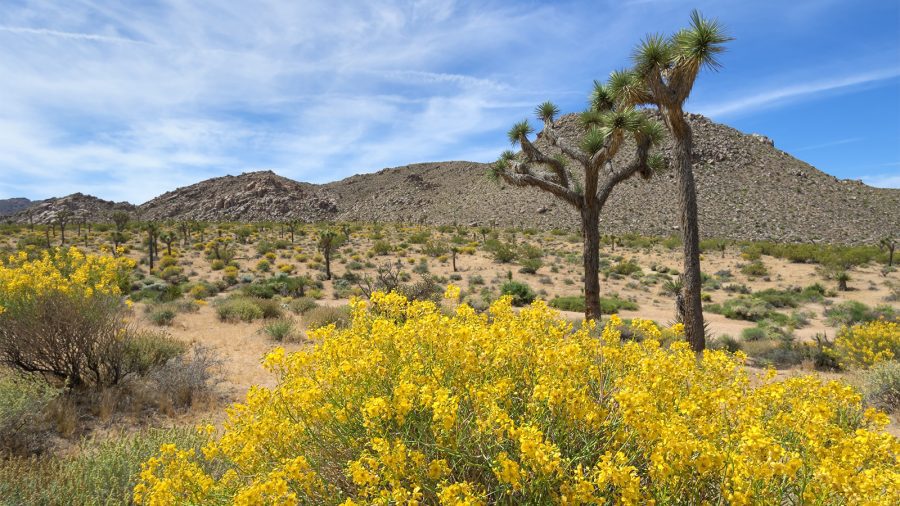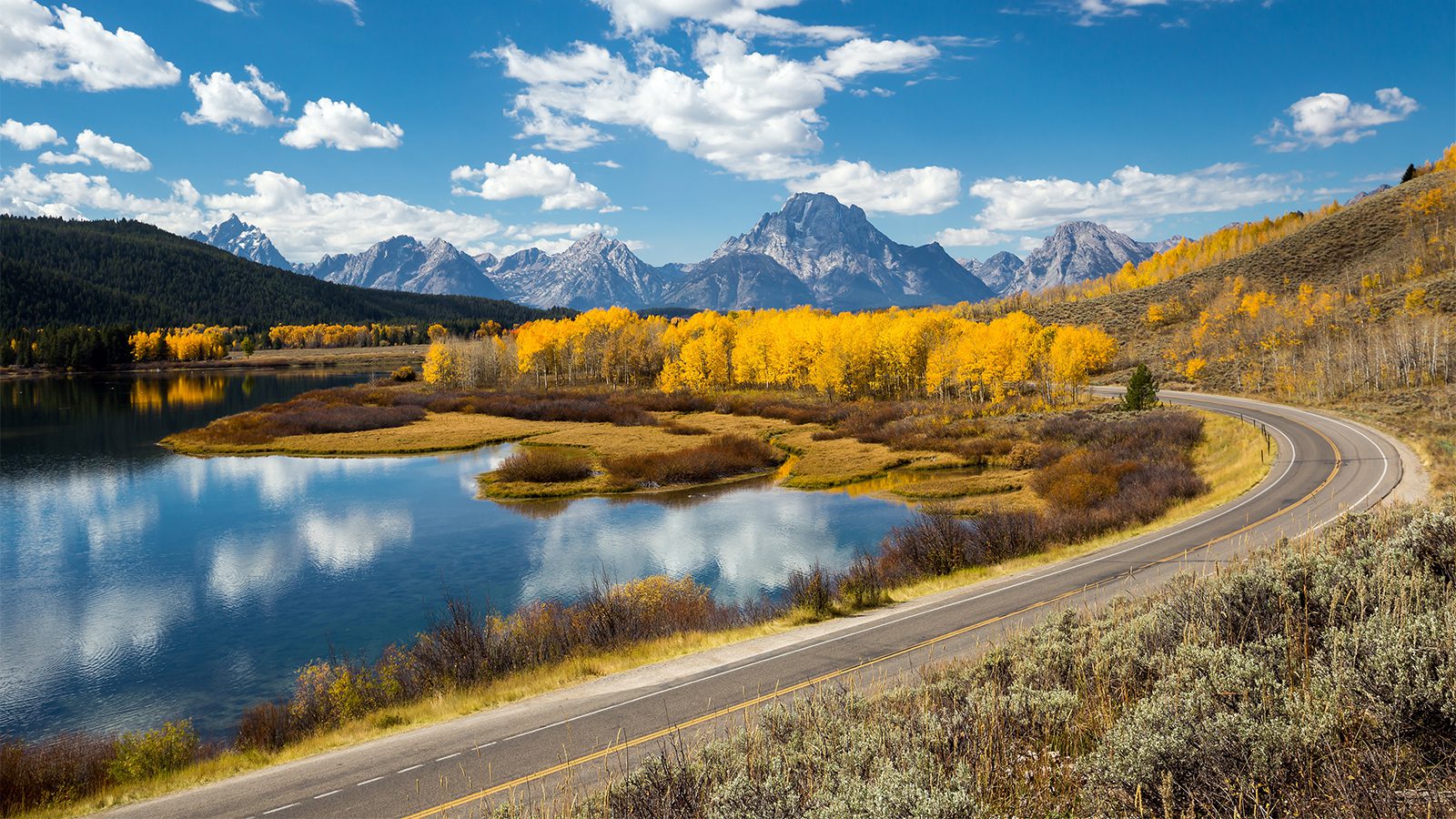The weather at Joshua Tree National Park has a hot desert (BWh) as classified by the Köppen climate system.
It’s very dry with very low precipitation, low humidity, and high evaporation rates if water is present. The skies are clear with intense solar radiation. Remember to bring along plenty of sunscreens if you’re visiting Joshua Tree National Park, even during the winter.
Average monthly temperature and precipitation
Seasons in Joshua Tree National Park
Summer (21 June to 22 September)

During the summer months at Joshua Tree, you can expect daytime temperatures that average over 100ºF (38ºC) and nights that are warmer than 75ºF (24ºC). Extreme temperatures are common, particularly at lower elevations.
Joshua Tree is one of the few US national parks where summer isn’t the peak season. In fact, summer is the least busy season in the park because of the desert’s scorching daytime temperatures.
While you certainly can visit the park during the summer, especially if you want to beat the crowds, you should be prepared to handle these potentially dangerous daytime temperatures.
As a general rule, it’s best to avoid hiking during the middle of the day in the summer. Plan your days so that you can hike early in the morning or in the evening and nap in camp in the middle of the day.
Also, don’t forget to drink lots of water to prevent dehydration!
Read More : What Should I Pack for Summer Camping?
Fall (23 September to 20 December)

Fall is one of the most popular months of the year in Joshua tree. Daytime temperatures normally hover around 85ºF (29ºC) and lows are usually around 50ºF (10ºC), so the conditions are quite moderate.
The fall crowds are usually slightly smaller than what you’d normally find in the spring at Joshua Tree, which is good if you’re looking to secure a campsite. However, by late fall, the park can get quite popular, especially as people look for snow-free alternatives to some of the more mountainous parks in the state, like Yosemite and Sequoia and Kings Canyon.
Finally, although there’s no fall foliage in Joshua Tree, the evening light tends to get a nice golden glow, which is perfect for aspiring desert photographers.
Read More : The Best Time to Visit Joshua Tree National Park
Winter (21 December to 19 March)

Joshua Tree’s winter weather varies between mild 60ºF (15ºC) daytime temperatures and nights that are well below freezing.
That being said, snow does happen occasionally at higher elevations, though isn’t a common sight down at most of the campgrounds.
Traditionally, Joshua Tree’s winter months were fairly quiet, with relatively few visitors. However, the increased popularity of rock climbing in the park has caused a fairly large influx of winter visitors.
These days, winter is an excellent time to visit if you’re okay with colder temperatures and if you’re willing to pack your winter sleeping bag. Unlike areas that get a whole lot of wintertime snow, most of the popular attractions in Joshua Tree are still very accessible during the winter months, you just have to be prepared for cold nights.
Oh, and if you do get to see the park during a snowstorm, consider yourself lucky! Snow on Joshua trees is a beautiful sight, indeed, though you might want to pack your winter boots.
Read More : What Should I Pack for Winter Camping?
Spring (20 March to 20 June)

The spring months of March through May are by and large the most popular times to visit Joshua Tree. Not only are temperatures generally quite mild at this time, but spring traditionally brings very clear skies and excellent all-around weather.
Plus, spring in Joshua Tree also provides a chance to see the desert’s wildflowers in full bloom, especially at Cholla Cactus Garden. That being said, it can be very hard to get a campsite in Joshua Tree during the spring, so be sure to book your site 6 months in advance to avoid disappointment.
Gaby Pilson
Gaby is a professional mountain guide with a master’s degree in outdoor education. She works primarily in the polar regions as an expedition guide, though she can be found hiking, climbing, skiing, sailing, or paddling in some of the world’s most amazing places when not at work.


